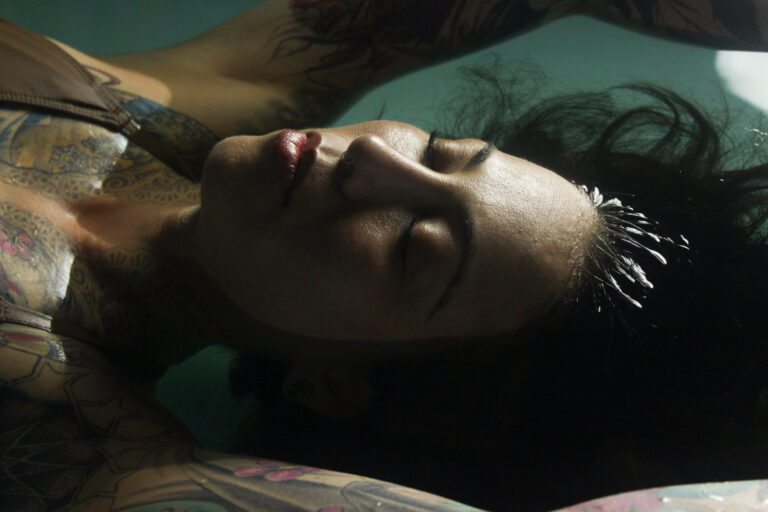Floating: History and Information

Book Online
What is a sensory deprivation tank (isolation tank)?
A Flotation Tank, also called an isolation tank or sensory deprivation tank, enables restricted environmental stimulation therapy (REST). It is a dark (only if you wish), soundproof tank that is filled with a foot or less of highly concentrated salt water.
The first ever isolation tank was designed in 1954 by John C. Lilly, an American physician and neuroscientist. He designed the tank to study the origins of consciousness by cutting off all external stimuli.
His research took a controversial turn in the 1960s. That’s when he began experimenting with sensory deprivation while under the effects of hallucinogenics, and ketamine, known for its ability to sedate and create a trance-like state.
In the 1970s, the first commercial float tanks were created and studies began to search for possible health benefits.
These days, finding a sensory deprivation tank is much easier, in the UK we now have approx 50 floatation locations offering a true, dedicated floatation experience.
Their increase in popularity may be due in part to the scientific evidence. Studies suggest time spent floating in a sensory deprivation tank will have some benefits, even in healthy people. For example, muscle relaxation, better sleep, decrease in pain, and decreased stress and anxiety.
Sensory deprivation effects
The water in a sensory deprivation tank is heated to skin temperature and nearly saturated with Epsom salt (magnesium sulfate), providing buoyancy so you float more easily.
You enter the tank nude and are cut off from all outside stimulation, including sound, sight, and gravity when the tank’s lid or door is closed. As you float weightless in the silence and darkness, the brain is allowed to enter into a deeply relaxed state.
Sensory deprivation tank therapy is said to produce several effects on the brain, ranging from hallucinations to enhanced creativity.
https://youtu.be/nHnbKjQGhHw
Book Online
Do you have hallucinations in a sensory deprivation tank?
Many people have reported having hallucinations in a sensory deprivation tank. Over the years, studies have shown that sensory deprivation does induce psychosis-like experiences. However do not let this put you off, their is a stigma associated with hallucinations, whereas the truth is that they are simply dreams, where you can find answers or clarity on subjects that usually elude you.
A 2015 study divided 46 people into two groups based on how prone they were to hallucinations. Researchers found that sensory deprivation induced similar experiences in both the high- and low-prone groups, and it increased the frequency of hallucinations in those in the high-prone group.
Will it make me more creative?
Basically, yes, if you look at this article published in 2014 in the European Journal of Integrative Medicine, floating in a sensory deprivation tank has been found in a handful of studies to increase originality, imagination, and intuition, which can all lead to enhanced creativity.
Can it improve concentration and focus?
Though most of the research that exists is older, there is strong evidence that sensory deprivation may improve focus and concentration, and may also lead to clearer and more precise thinking. This has been linked to improved learning and enhanced performance in both education and work groups.
Does it improve athletic performance?
The various effects of sensory deprivation tank therapy on athletic performance are well documented. It has been found effective in speeding up recovery after strenuous physical training by decreasing blood lactate in a study of 24 college students.
A 2016 study of 60 elite athletes also found it improved psychological recovery following intense training and competition.
Below you can check out some athletes explaining how Floatation Tanks help them and their experiences with them on an ESPN special.
https://youtu.be/XM3I8T0p0d4
Book Online
Floatation tank process
A session in our float tanks usually goes as follows:
- You arrive at the flotation center, showing up ideally 15 minutes early if it’s your first visit and at least 5 minutes if you are experienced.
- Use the bathroom!
- Once in the Pod Room remove all of your clothing and jewelry.
- Shower before entering the tank.
- Enter the tank and close the door or lid.
- Gently lie back and let the buoyancy of the water help you float.
- Music plays for 10 minutes at the start of your session to help you relax(Optional).
- Float for an hour.
- Music plays for the last five minutes of your session(Optional).
- Get out of the tank once your session has ended.
- Shower again and get dressed.
- Make use of Hair and Make-Up booths.
- Grab a drink and take a seat in our Reflection Space, a quirky, comfortable space designed to allow you to continue relaxing whilst reflecting on your float journey.
To help you relax and get the most out of your session, it is recommended that you eat something approximately 30 minutes before your session. It’s also helpful to avoid caffeine for four hours beforehand. The salt air in the pod can make you thirsty, we advise bringing a bottle of water. We do provide a water spray bottle to wash out eyes if you get any of the salt solution in them. You can wear goggles, however we do not advise it for the best experience.
Shaving or waxing before a session is not recommended as the salt in the water can irritate the skin.
Cuts or grazes should for the same reason as above, be covered with protection, like a vaseline which we provide upon request.
To find out more about the benefits of floating click here.
Book Online
Floating: History and Information
Add Your Heading Text Here
Floating: History and Information



